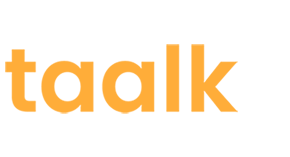The Unseen Challenge: How SkilTrak Is Revolutionizing Student Placements with AI
In the world of vocational education, a critical component often remains shrouded in manual processes and logistical chaos: student placements. These hands-on experiences are the bridge between classroom theory and real-world application, yet for years, Registered Training Organisations (RTOs), students, and industry partners have grappled with a complex web of spreadsheets, emails, and phone calls. This is the challenge SkilTrak, a Melbourne-based EdTech startup, was born to solve.
SkilTrak isn’t just a platform; it’s a paradigm shift. Its automated placement management system is the backbone for RTOs across Australia, ensuring students in sectors like Hospitality, Beauty, and Community Services secure the eligible internships they need to complete their qualifications. By bringing a sophisticated, AI-driven solution to a historically manual problem, SkilTrak’s founders are not only streamlining operations but also redefining the future of vocational training.
The Problem with the Paper Trail: Why Student Placements Are a Logistical Nightmare
For RTOs, managing student placements is a massive, resource-intensive undertaking. They must juggle multiple stakeholders—students, industry partners, and regulatory bodies—all while ensuring every placement meets strict vocational education and training (VET) standards. The traditional process involves:
- Manual matching: Sifting through student profiles and a database of potential workplaces to find the right fit.
- Endless communication: Coordinating schedules, interviews, and follow-ups via fragmented emails and phone calls.
- Document chaos: Chasing down and managing a mountain of paperwork, from e-sign agreements to compliance forms.
- Progress tracking: Attempting to monitor student progress without real-time data, often leading to delays and compliance risks.
This logistical burden not only drains resources but also creates a significant bottleneck, preventing RTOs from scaling and offering more opportunities. For students, it means a slower, more stressful journey toward their career, often filled with uncertainty and a lack of transparency. The industry partners, too, face friction and inefficiency when trying to find and onboard new talent.
The “Aha” Moment: From Problem to Platform
The unique angle of SkilTrak’s story lies in its founder’s direct experience with this problem. While the user’s name was not provided, their vision was clear: to create a centralized, automated system that acts as a single source of truth for all stakeholders. The “aha” moment wasn’t a sudden flash of genius but a gradual realization born from a deep understanding of the inefficiencies in the vocational education sector.
Initially, the company’s focus was narrow, aiming to solve the placement problem for a limited set of courses. However, the founders quickly discovered the pervasive nature of the challenge across all vocational courses requiring work placement. This insight led them to hire a dedicated tech team to develop a comprehensive platform, transforming their small-scale idea into a robust, scalable solution. This pivot from a service-based model to a technology-first approach is the core of their entrepreneurial journey.
SkilTrak’s Automated Advantage: A New Era of Efficiency
SkilTrak’s platform, a product of this visionary pivot, offers a suite of features that directly address the pain points of the manual system. By automating key processes, they provide an unparalleled value proposition for RTOs, students, and businesses alike.
- Automated Matching & Scheduling: The system uses intelligent algorithms to match students with eligible placements based on their course requirements, location, and availability. It also automates interview scheduling, eliminating the back-and-forth communication that plagues traditional methods.
- Centralized Document Management: All essential documents—from agreements to student evaluations—are stored and managed in a secure, centralized portal. This ensures compliance and provides an audit-ready trail for RTOs.
- Real-Time Progress Tracking: Students can track their placement hours and progress, while RTOs get a real-time overview of their entire student cohort. This transparency boosts efficiency and ensures students are on track to meet their course requirements.
- Enhanced Communication: The platform integrates communication tools, providing a seamless way for RTOs, students, and industry partners to connect, share updates, and resolve issues.
This strategic approach not only saves RTOs time and resources but also significantly improves the student experience. It reduces stress and uncertainty, allowing students to focus on what truly matters: gaining practical skills. For industry partners, it simplifies the process of finding and nurturing future talent, making them more likely to engage with RTOs.
The Roadmap for Future Growth: Scaling Beyond Automation
SkilTrak’s success is a testament to the power of a technology-first approach in a traditional industry. Their philosophy is not just to automate but to empower. By taking over the logistical burdens, they allow RTOs to focus on their core mission of providing quality education.
The next phase for SkilTrak involves leveraging data and AI even further. By analyzing placement trends, student outcomes, and industry needs, they can create even smarter matching algorithms. The long-term vision is to become the definitive platform for vocational student-to-industry pathways, expanding into new sectors and geographic markets. The goal is to not only facilitate placements but to actively close the skills gap by ensuring students are placed in roles that align with the most in-demand industry skills.
Key Takeaways for Founders
- Solve a deeply felt problem: Don’t just build a product; identify a genuine, painful problem within an industry and create a solution that provides undeniable value. The manual nature of student placements was SkilTrak’s perfect target.
- Embrace the pivot: Be prepared to adapt your initial idea. SkilTrak’s realization that the problem was sector-wide, not just course-specific, was a crucial turning point that enabled them to build a more powerful and scalable platform.
- Leverage technology for core efficiency: Don’t just digitize old processes; use technology to fundamentally rethink and automate them. SkilTrak’s automated management system isn’t just a digital version of a spreadsheet; it’s a new, more efficient way of working.
- Think beyond your immediate user: SkilTrak’s success is rooted in its ability to add value to multiple stakeholders—RTOs, students, and industry partners. A multi-sided platform that reduces friction for all parties is a recipe for long-term growth.
SkilTrak’s journey is a powerful reminder that even in seemingly low-tech industries, there are immense opportunities for innovation. By focusing on the user experience and leveraging smart technology, they have built a platform that is not only a business success but a force for good, shaping the careers of thousands of students across Australia.
Are you a startup founder or innovator with a story to tell? We want to hear from you! Submit Your Startup to be featured on Taalk.com.








